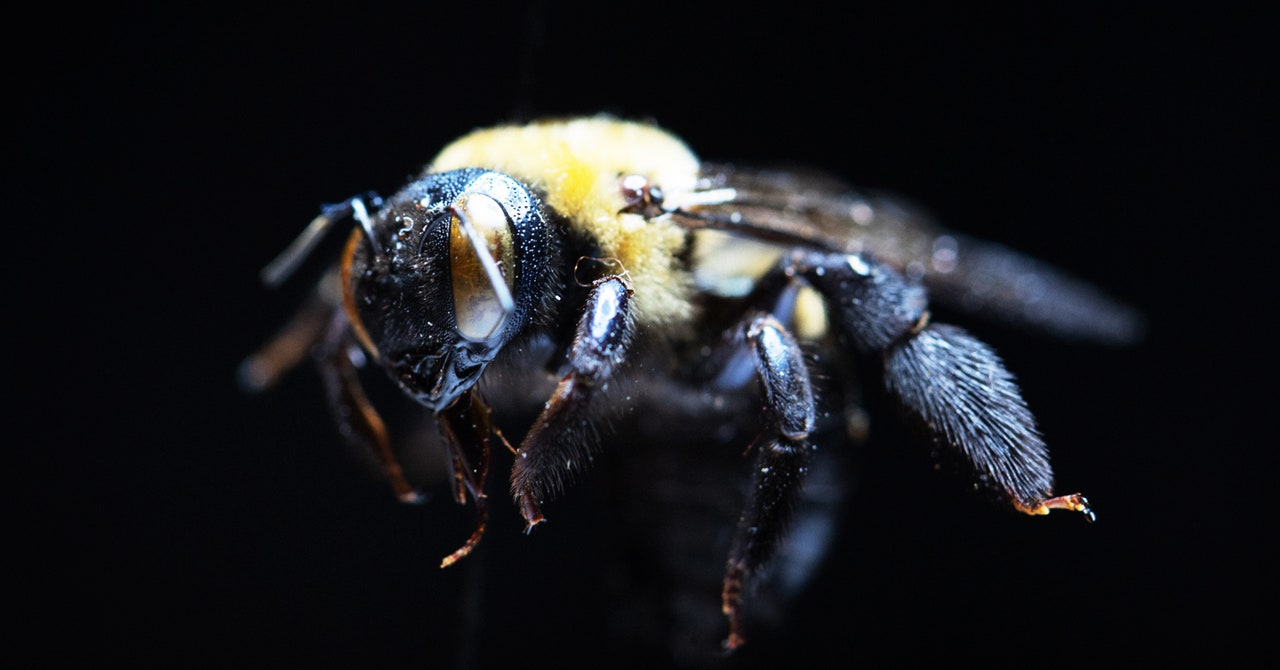
The goal of this scientific project is to better understand which native bees are pollinating which crops in these community spaces, and how gardeners can attract and protect them. For example, bees don’t like big, open spaces. They appreciate vegetal cover—places to hide from predators like dragonflies that are waiting to pick them off.
Self-respecting gardeners might not like to hear this, because it means letting things get a little unkempt. “Those are things that, generally, people are trained not to do,” says Dean Gunderson, director of education at the nonprofit Seed St. Louis, which supports community gardens and is participating in the new project. But if scientists provide evidence that supports this strategy, it becomes more defensible—proof, he jokes, that “I’m not just a lazy gardener.”
Ground-nesting bees also need swaths of dirt, which is not the most aesthetically pleasing option. But urban gardeners would be doing these species a big favor by opening up some ground instead of just laying down mulch, since so much of the built environment is already covered in concrete.
And, well, they’re going to have to not be scared of bees. But, says Spevak, bees mean you no harm—they just want to visit your flowers. “If you run your lawnmower over a yellowjacket nest, you’re going to get stung,” says Spevak. “If you run your lawnmower over a bunch of ground-nesting bees, they’re annoyed with you, but now they’re spending their time trying to find the holes that you probably just covered up.”
“They’re cute as heck, too,” Spevak adds. “They’re really spectacular animals. If you just spend the time to look at them, they’re actually more diverse than the birds in your garden.”
Bees are critical actors in a burgeoning scientific field known as rurbanization, a way to improve food security and beautify urban landscapes. Scientists are researching which crops might be best suited for cities—probably nutrient-dense, fast-growing species like leafy greens. (Staples like corn and wheat would still come from rural areas, where they’re easily tended with machinery.) Researchers are also figuring out which crops might be best to grow on rooftops, ideally under solar panels, which provide shade so the plants don’t get too sun-blasted. Such agrivoltaics would cool buildings while generating power and food.
Extra green spaces will mitigate the urban heat island effect, in which the cityscape absorbs the sun’s energy, raising temperatures perhaps 20 degrees Fahrenheit above nearby rural areas. A community garden “sweats,” as plants release water vapor, cooling the neighborhood—and if you’re in the garden itself, you can enjoy its shade.
But it will take a legion of bees to keep these gardens healthy. In South Los Angeles, the farm network Crop Swap LA has noticed the stark contrast between neighborhoods with and without pollinators. “We see a very significant difference in the amount of flowering that happens and the pace of the plants’ growth and development,” says Jamiah Hargins, the group’s founder and executive director. “When there’s a deficiency of pollinators, the plant just doesn’t give out as many flowers, or doesn’t give us as much pollen per flower. And it ends up limiting the efficacy of what that plant structure can actually achieve.”
And urban life still holds some dangers for City Bee. The scientists in St. Louis are investigating factors like how well they can cope with high temperatures as the heat island effect intensifies, and how pollution like ozone might affect them.
The researchers hope their surveillance project will spur research in other cities so scientists can figure out how to nurture the relationship between pollinators and people. “We’re giving [bees] additional floral nectar sources to maintain their populations, and then their activities are giving us the fruits of their labor through vegetables, fruits, nuts, seeds—whatever it might be,” says Spevak. “It’s that relationship that was kind of forgotten.”


